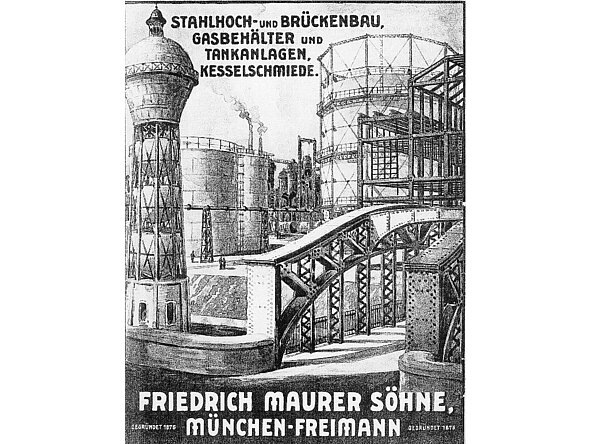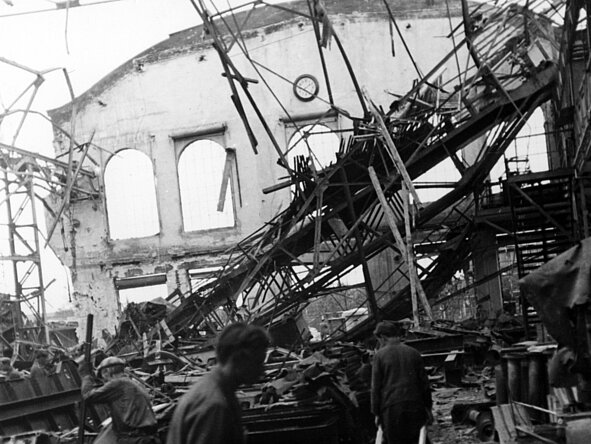1876
Craftsman Friedrich Maurer establishes a small workshop as a metal spinner in Munich. Over 20 years, a metalware factory evolves from this workshop.

1899
After the founder’s death in 1899, his sons Friedrich and Georg continue the business under a new name: FRIEDRICH MAURER SÖHNE.
1911
Official registration of the company in the commercial register.
1924
Manufacture of lattice masts as well as pressed and punched parts for the equipment of railway vehicles of the Deutsche Reichsbahn (German State Railway).
1925
The company moves to its current location in the north of Munich. From then on “iron structures” are also offered, such as hall and roof constructions, crane tracks and bridges.
1929
First experience of mechanical engineering: drilling stands for the Deutsche Reichsbahn (German State Railway).
1931
A large-scale order for the scrapping of railway engines results in a business encounter between Georg Maurer and Johannes Beutler. Despite the economic crisis, Beutler acquires the “ironworks” FRIEDRICH MAURER SÖHNE in 1931 and continues the business under the same name.
1932
Brake cylinder supports are manufactured in large quantities under a Kunze-Knorr license.
1934
Johannes Beutler purchases the adjacent plot of land thus enabling a substantial expansion of the factory. The company starts with steel construation on a large scale.
1935
Further development of welding technique enables the construction of gasometers.
1936
The first gas separators for oil drilling are produced and some are exported as far as the USA.
1937
The expansion of air transport leads to a significant boost. In particular, the hangar gates make MAURER SÖHNE well- known throughout Germany.
1938
Further mechanical engineering products: traction drives for mixers.
1939
Due to government requirements, several armaments are included in the production program- me. The Second World War initiates a temporary peak in the company’s business activities with over 1,000 employees and large orders.

1944
Towards the end of the war, most of the company buildings are destroyed in air strikes.

1945
The years 1945 to 1954 are characterised by dismantling, improvisation and reconstruction.
